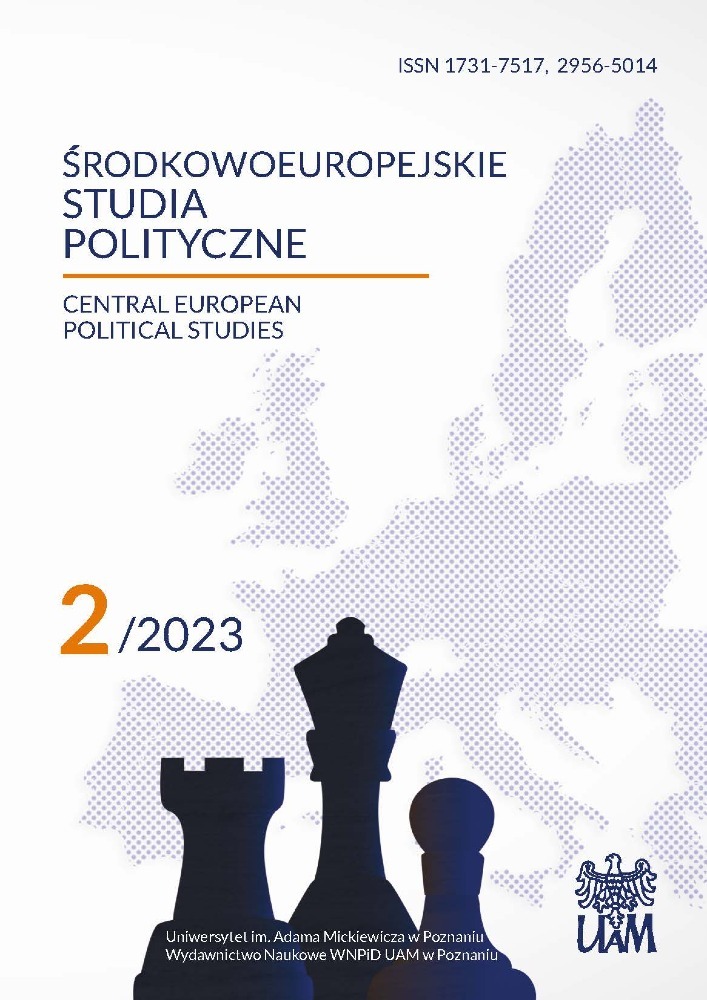Abstract
The air, water and soil pollution is one of the most frequently discussed issues related to environmental threats. It is also perfectly embedded in the general public awareness. However, the situation is different in the case of space pollution. The awareness of cosmic debris and threats it can pose is low or absent in contemporary societies. This may be due to the low promotion of knowledge about space in the media, as well as the fact that threats of this type appeared quite recently. The number of scientific publications on the topic of space debris is limited. The cognitive gap also concerns knowledge about threats posed by space waste and methods of eliminating them. The cognitive gap has been the reason to raise this topic. The aim and thesis of this publication is to show that space debris poses significant ecological threat on a global scale. At the same time, however, there are ways to reduce its impact. The publication is designed to increase the awareness of the subject among members of our society. The research hypothesis is: There is a serious relationship between space debris and a significant impact on the global environment and humans. The paper discusses the concept of space pollution, its sources, and forms and divisions. Particular attention has been given to ecological threats posed. The publication also shows examples of actions aimed at limiting this harmful phenomenon. The article is based on information published in books, magazines, and in the net. The research method used in the publication is the analysis of existing data and literary criticism. Results of the research account for a positive verification of the hypothesis.
References
Anselmo L., Pardini C. (2000), Collision Risk Mitigation in Geostationary Orbit, “Space Debris”, vol. 2, nr 2, June, s. 67–82. DOI: https://doi.org/10.1023/A:1021255523174
Brzeziński M. (2009), Wschód czerwonego księżyca. Wyścig supermocarstw o dominację w kosmosie, Wydawnictwo Znak, Kraków.
Christiansen E. L., Hydeb J. L., Bernhard R. P. (2004), Space Shuttle debris and meteoroid impacts, “Advances in Space Research”, vol. 34, issue 5, s. 1097–1103. DOI: https://doi.org/10.1016/j.asr.2003.12.008
Ciepliński A., Woźniak R. (1994), Encyklopedia współczesnej broni palnej (od połowy XIX wieku), Wydawnictwo „WIS”, Warszawa.
David L. (2005), The Clutter Above, “Bulletin of the Atomic Scientists”, July/August. DOI: https://doi.org/10.1080/00963402.2005.11460900
Forsyth S. K. (2002), Delta. The Ultimate Thor, w: To Reach The High Frontier: A History of U.S. Launch Vehicles, red. R. Launius, D. Jenkins, University Press of Kentucky, Lexington.
Godwin R. (2005), Apollo 11 – pierwszy człowiek na Księżycu, Prószyński Media, Warszawa.
Hoots F., Schumacher P. Jr., Glover R., History of Analytical Orbit Modeling in the U.S. Space Surveillance System, “Journal of Guidance Control and Dynamics”, vol. 27, issue 2. DOI: https://doi.org/10.2514/1.9161
Kamassa M., Zatłoczona orbita – czy grozi nam „Syndrom Kesslera”? (pol.), Space24 [on-line], 2016-05-30, dostęp: 23.08.2023.
Klinkrad H. (2006), Space Debris: Models and Risk Analysis, Springer-Praxis.
La Vone M., Kessler Syndrome (ang.), “Space Safety Magazine” [on-line], dostęp: 23.07.2023.
McConnell M. (1987), Challenger: A Major Malfunction, Simon and Schuster, London.
McDaniel P. (1997), A Methodology for Estimating the Uncertainty in the Predicted Annual Risk to Orbiting Spacecraft from Current or Predicted Space Debris Population, National Defense University.
Oswald M., Stabroth S., Wiedemann C., Wegener P., Martin C. (2006), Upgrade of the MASTER Model, Final Report of ESA Contract No. 18014/03/D/HK(SC), Braunschweig.
Schefter J. (1982), The Growing Peril of Space Debris, „Popular Science”, July.
Smirnov N. (2002), Space Debris: Hazard Evaluation and Mitigation, CRC Press, Boca Raton, FL. DOI: https://doi.org/10.1016/S0045-8732(02)80100-0
Stokes G. H., Braun C. von, Sridharan R., Harrison D., Sharma J. (2006), The Space-Based Visible Program, MIT Lincoln Laboratory, 8 March.
Suszkow J. N. (1969), Sztuczne satelity Ziemi, Wydawnictwo MON, Warszawa.
Wright D. (2007), Debris in Brief: Space Debris from Anti-Satellite Weapons, “Union of Concerned Scientists”, December. DOI: https://doi.org/10.1063/1.2800252
https://ciekawe.org/2015/11/13/kosmiczne-smieci-jak-sie-ich-pozbyc/, 2.09.2023.
https://www.space24.pl/indie-zestrzelily-satelite, 13.10.2022.
https://www.wikiwand.com/pl/Kosmiczne_%C5%9Bmieci, 14.08.2023.
https://www.pulskosmosu.pl/2015/08/19/orbita-ziemska-rosnace-zagrozenie-ze-strony-smieci-kosmicznych/, 19.10.2023.
https://spaceflight.nasa.gov/shuttle/reference/shutref/events/deorbit/, 16.10.2023.
https://www.orbitaldebris.jsc.nasa.gov/, 20. 09.2023.
https://space24.pl/bezpieczenstwo/kosmiczne-smieci/czy-kosmiczne-smieci-zagrazaja-ludziom-na-ziemi, 10.09.2023.
https://tech.wp.pl/zasmiecamy-orbite-ziemi-kosmiczny-karambol-to-kwestia-czasu,6863223674882624a, 22.09.2023.
https://astrofaza.pl/kosmiczne-smieci-sposob-na-sprzatniecie-orbity/, 28.08.2023.
https://upload.wikimedia.org/wikipedia/commons/1/11/STS-118_debris_entry.jpg, 2.09.2023.
https://upload.wikimedia.org/wikipedia/commons/c/c3/PAM-D_module_crash_in_Saudi_Arabian_desert.png, 23.08.2023.
https://tech.wp.pl/mandat-za-smiecenie-w-kosmosie-to-pierwsza-taka-sytuacja-w-historii,6948261129837184a, 30.09.2023.
License
Copyright (c) 2023 Krzysztof Sala

This work is licensed under a Creative Commons Attribution-ShareAlike 4.0 International License.

